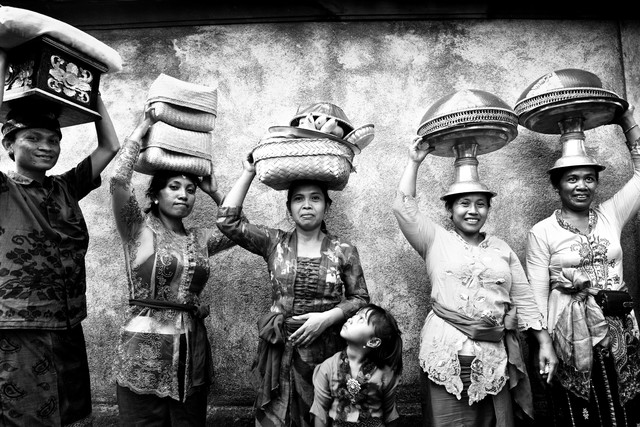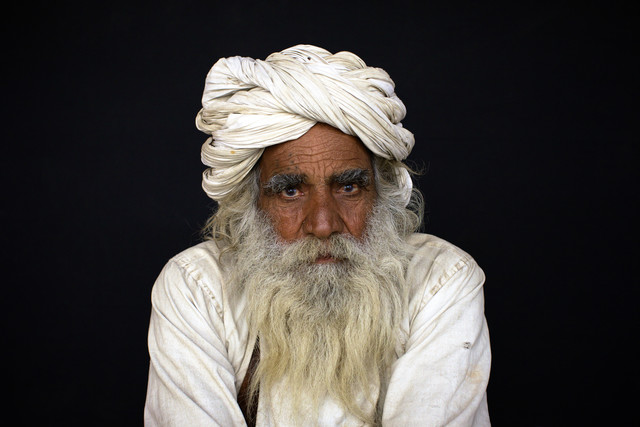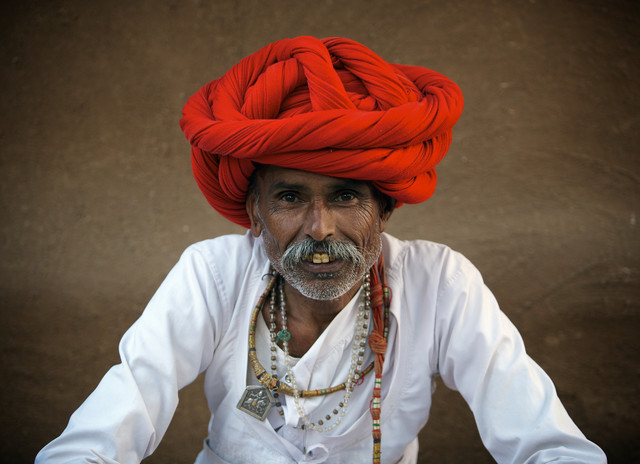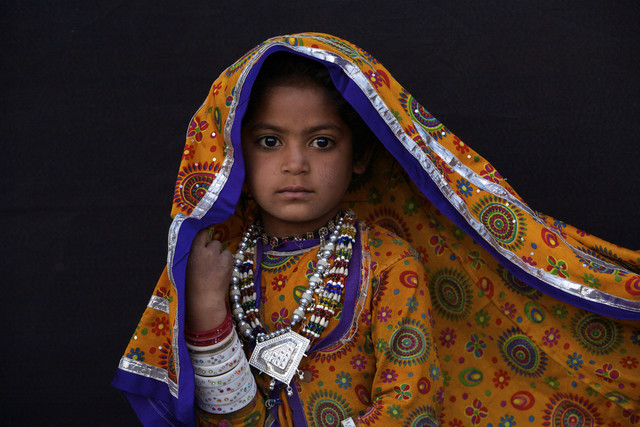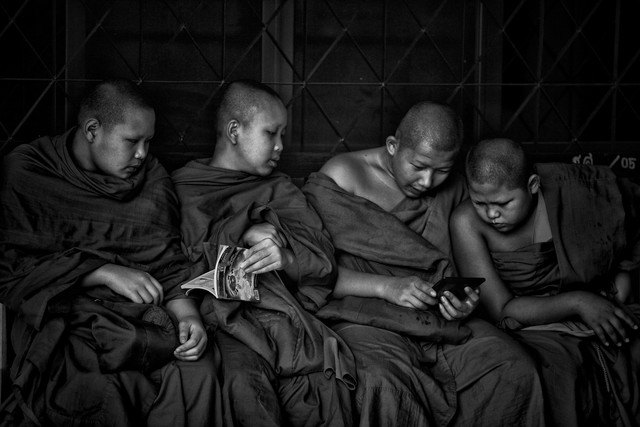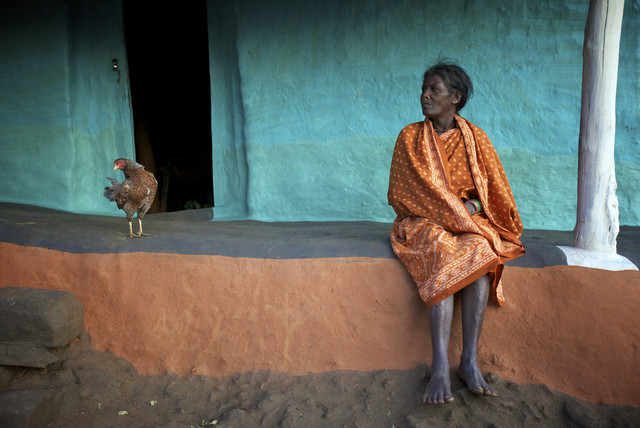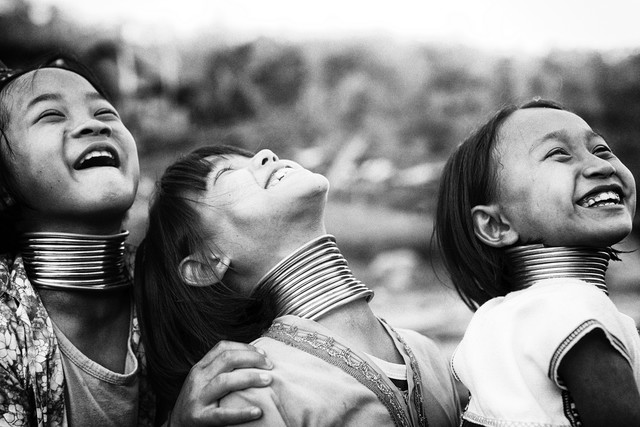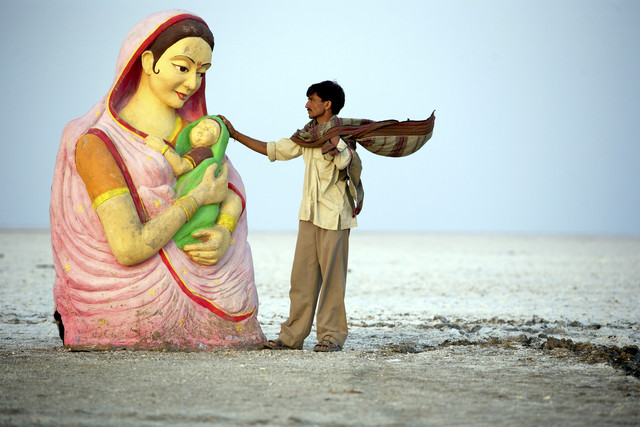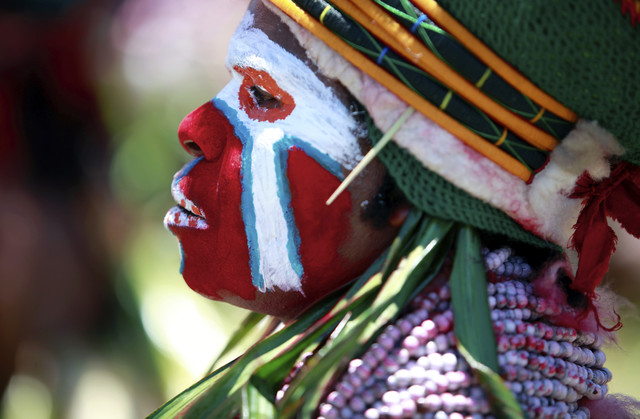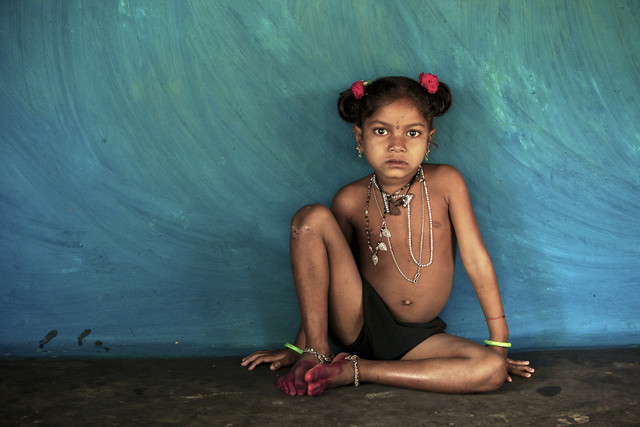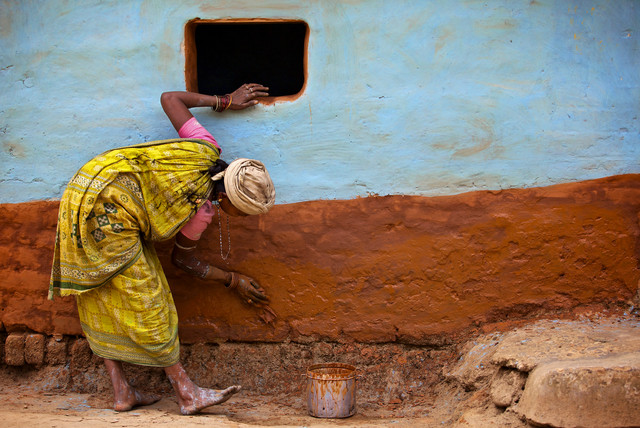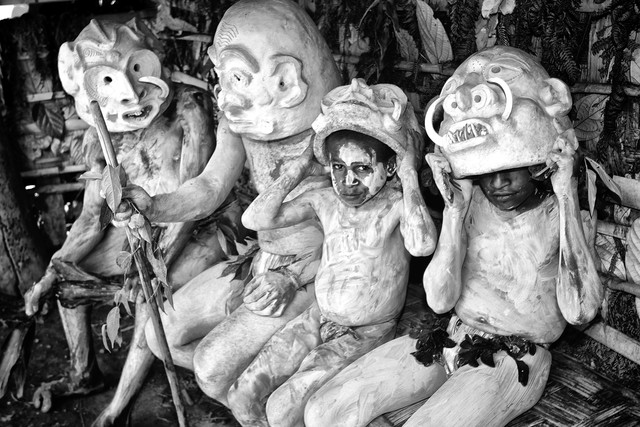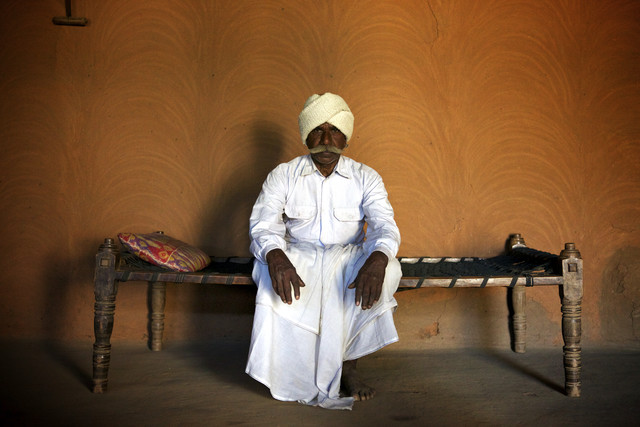Ingetje Tadros‘ talent is to capture the triumphs, tragedy and diversity in people’s lives with her camera. Through her documentary style of photography, she confronts and provokes to deliver to the humanitarian cause, and convey a message by telling people’s stories. Having been born in Holland, Ingetje now calls Broome (Western Australia) her home.
How did you get interested in photography?
My father was an amateur photographer, and whatever was happening in the family and on holidays, he had his Canon with him. When I left home for the first time at the age of 17 and ventured to a Kibbutz in Israel, the first thing I did was buy a camera – I believe it was a Pentax. Ever since then, I’ve had a camera with me, as I just loved to take photos (side note: I don’t like to say “I take a picture”, as to me, it’s not just “taking”, it’s “making” it (waiting for that moment, compensation, light… many factors, really). I think it’s always been a way to express myself through the lens, and to share impressions with others, who did not have – for whatever reason – the means to travel themselves.
You say about yourself that your „ethos is rooted in social documentary photography, and being a storyteller.“ Can you expand on this for us?
I only started to take my photographic work seriously less than four years ago. And I started to challenge myself by contacting agencies like Getty Images, just to see if they would like my work. And they did, and I became a contributor for Getty, then for Aurora, then for Corbis . Then I managed to become a stringer for Getty and Demotix and started to do freelance work for some newspapers. But after a few years, I started to dislike it, as I felt I was missing ‘something’. Then a friend mentioned to me that I should participate in some workshops, and that led me into the direction of documentary and storytelling. These workshops took my photography to a whole new level, and I decided to turn the wheel and started looking for stories – stories that interested me and that I became passionate about. These stories have a meaning , a soul, and I believe that this way, my work is becoming stronger and more real. I feel when you really ‘live’ a story, that’s the time the story becomes powerful – and you stop ‘passing by’, as I did with my travel photography.
When and why did you substitute your native country Holland for Australia?
As a young child, I’ve always wanted to explore and travel, and could not see myself staying in Holland. By now, I’ve travelled over 50 countries since I was 17. It was when I met Romani, now my husband for almost 30 years, that we decided to live in Australia. At that time, I was a travel agent for a French company, Nouvelles Frontiers, in Rotterdam and as the wages were low, we could use stand-by tickets. One time, I was able to bring Romani with me to Australia. I fell in love with this country, and knew when we left that I was going to come back. That happened much later – first, I lived in Egypt for a year, as Romani is Egyptian, and since we were not able to get into Australia at first, we decided to move to New Zealand. We had never been there, we just applied for a visa and got lucky – and lived in New Zealand for twelve years. Then, in 2001, we sold everything and started traveling with our two kids (8 and 10 years). We were on the road for more than two years, and ended up in Broome, Western Australia.
What does a good photographer look like?
Tall and blond, haha. To me, a good photographer is whoever is able to tell a story in just one image.
Which of your own abilities or traits has proven useful for you as a photographer?
To be able to connect, and this is what I can do easily, as I get this ‘certain feeling’ when I see something – then I know I have to go for it. The rest just follows. If a situation is getting difficult and I get challenged, I feel that I have to pursue it even harder. I love this ‘on the edge’ sort of feeling. I really listen to myself and am impulsive. When the going gets harder it gets better, I always say that to myself. Also, to approach with respect, a smile and a joke can work wonders. Since I’m doing documentary, I’m even trying to work more slowly, shoot less. Sometimes, I don’t take a photo, then the people ask me “where’s your camera, you need to take photos”. That is what I like, when I do a longer project, to connect and things unfold. To create through these connections and to take the time, to sit with the people, have a chat – and I always like to tell them what I’m trying to achieve, how I see certain things. And often, through these conversations, people give me their thoughts and ideas as well. Many times, I’ve taken photos just to return the images, often I don’t even use them, but it’s to create a relationship. Especially with my personal long-term approach, this really helps create a relationship. And I make great friends along the way!
What makes a trademark Ingetje Tadros picture?
Good question! I hope I even got that far already, but since I’ve done a few stories like Caged Humans in Bali and Kennedy Hill, I feel now like I’m getting a more consistent kind of style: I try to get a story in the image and like to confront and show the rawness of it all. Also, I like to get close, but am aware that I need to take a step back as well.
And which one’s your favorite? Why?
I find this one very hard to answer, as every story has one or two ‘special’ images. Then there are also the emotions behind it, and how I managed to take that image and what the situation was at the time. The image below is one that haunts me till today: Kadek had been chained and locked up by his brother, who is afraid to release him, “as he is too aggressive”. First, Kadek was restrained with a chain in 2004, but the log of wood was added in 2013. To be in a room, alone, with a person chained and naked on just a bamboo bed, is very confronting! How are you able to take photos in a respectful manner? I decided this story needed to be told, people need to see it, as this is inhumane, people should not be treated like that.
This other image, “The Woman and the Chicken”, makes me happy: I took it in a split second while I was walking past her. This is in Orissa in India. You can see the difference between both images is huge and the observer gets a completely different feeling from looking at them.
What will your portfolio look like in ten years?
A difficult question as well. My dream is to find stories that need to be told – and yes, I know it sounds like a cliché, but there are still many to be told. But to see a story in something and realising it are two very different things, and then to get access is something else again. I always say ‘once I’m in, then it’s much easier’. Also, because I work by myself, I have no agency behind me – I don’t get embedded and everything is self-funded. This can make it hard at times, very hard, and it can be a lonely journey as well. So for me, to get a story like Caged Humans in Bali published, and then to receive a big award – these are the things that keep me going. For the moment, I just keep doing what I’m doing, and my goal for my personal project This is My Country is to make a book, but I haven’t finished yet.
You’re currently working with Amnesty International Australia on a campaign around indigenous youth injustice in the Kimberley (Western Australia). Can you tell us a little bit about this project?
I was contracted for this Campaign with Amnesty International Australia for a five day assignment in the Kimberley in February 2015. Amnesty’s project documented in words and photos a wide range of individual stories in relation to the over-representation of Indigenous children in detention.
For your project „Caged Humans in Bali“, you won the United Nations Association of Australia “Best Photojournalism Award“ in 2014. What was this project about?
This was absolutely unplanned and unexpected. I was going to join a workshop which I thought would be a good idea as to learn more about myself as a photographer, and to work more on my style etc. But when I found out it was going to be in Bali, I nearly declined, as it did not appeal to me: I had been to Bali more than eight times, and I thought I’d seen it all. Also, to work as part of a group wasn’t appealing to me, so I was ready to skip this one. Eventually, we agreed I could sort it all out myself – a story, a theme – and I would work outside the group, and so I started to do research on Bali.
Soon afterwards, I found out about Pasung, a method used to restrain the mentally ill, and that there was an organization which helps these families. I tried to contact them, emailed, called, but no reply ever; and again, when it gets harder, I work harder, and after various emails and chats, they where not interested, as they had made a bad experience with another photographer. That’s when I decided to attend the workshop, and I went two days early – this way, I managed to get an appointment with the Suryani Institute! We had a very serious talk, and after a ten-minute wait, they said I could start the following day. An amazing experience, and I photographed over 21 people in and outside Pasung. With my lecturers at the workshop, I would sit down and edit every night – a very intense experience and I learned so much. One thing I remember very vividly is ‘mindfulness’, and to be able to just ‘be’ in these intense moments with human suffering, and to take photos. This is something I had never experienced before. And to be very honest, it sometimes haunts me till this very day. I was lucky to be amongst my lecturers, and to talk about it and about how to approach ‘subjects’ (I prefer to say people), how to capture these moments…. It came naturally to me on the second day already. I’d sent everybody outside, away from the scene, and I stayed there alone – sometimes with a person chained to a bamboo bed, dribbling and making strange noises. To be able to sit there definitely changed me, and I said to myself: this needs to be told, I need to get this out in the open.
After I came home, I was approached by Diimex a new platform representing photographers; they had seen my work and asked if I was interested in joining. From one day to the next, my Bali work got published in the Daily Mail, and I started to submit it to a few competitions. I got a phone call from the United Nations in which they asked me if I would attend the award night in Melbourne, and as I was on the road at that time, I was able to fit this night in. And then I found out that I won the “Best Photojournalist Award”! Well, I was speechless, and also intimidated, as all newspapers had their editors and photographers with them, and I was by myself and I had to give a speech too! All in all an amazing experience, but I also am sad, as most of the people I photographed are still being restrained, and this award should go to the people who help them there on the ground – and to me, that’s the Suryani Institute, they are the heroes. There are quit a few photographers, who have now documented the people in Pasung, and I’m happy to have been part of a photographic exhibition to raise awareness about Pasung.
Do you think you can make a difference as a photographer?
I believe so. I’ve recently published a story on Kennedy Hill, five minutes from my home, and I spent over six months in and out of this community. Kennedy Hill is an Aboriginal community in the remote town of Broome in the Kimberley, North West Australia. The community exists in the shadows of Western Australian Premier Colin Barnett’s commitment to close down approximately 100 to 150 Aboriginal communities in Western Australia. And I remember that at first, after I’d posted some photos, people would ask me: “Where is this?” Even the locals.
In my experience, there are always people who don’t like it when you show the raw reality, some people have a real problem with that. But to me, the most important thing is that the people in the story agree that I tell their story – this makes it powerful; it gives them a voice. There have been photographers, who were able to change laws with their stories, I think that’s my greatest inspiration.
You can buy Ingetje Tadros’ fascinating pictures from her gallery on Photocircle. For further information, updates on her work and more photographic input, be sure to also visit Ingetje’s website.

